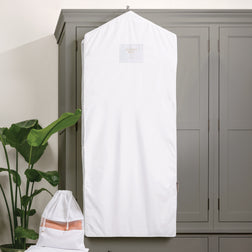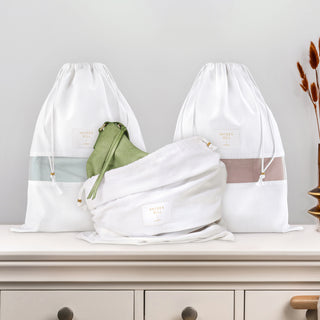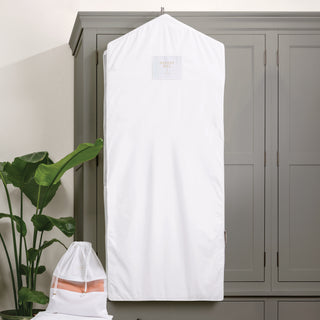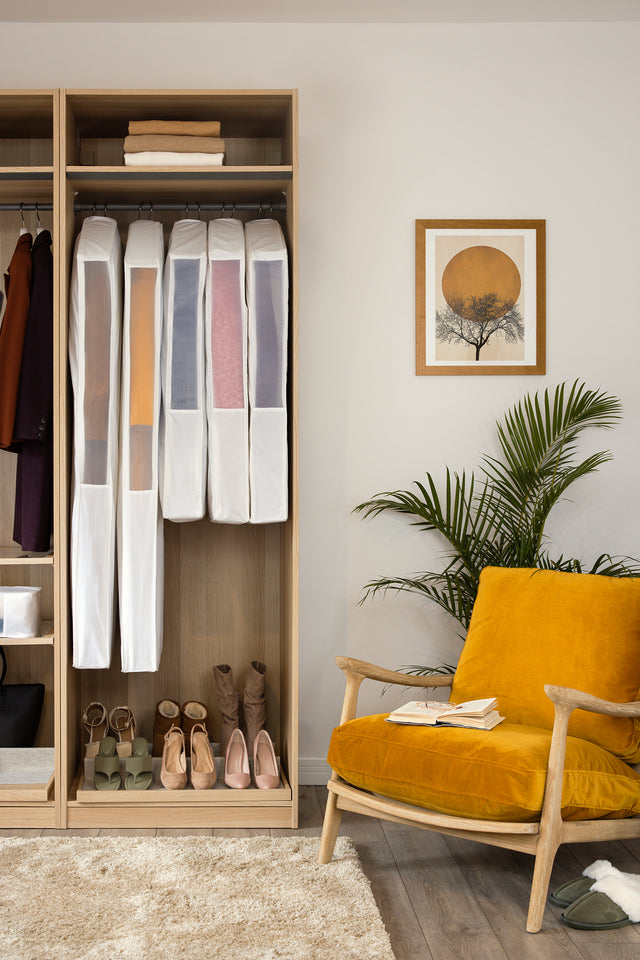Bleaching is used in the textile industry to remove natural or manufactured pigments from fabrics in order to create a whiter or lighter shade. The bleaching process prepares the fabric for dyeing or printing to ensure that the desired final color will be achieved.
When shopping for clothing or home decor, a smart buyer will look at the manufacturer’s label to see what material an item is made of.
Two terms you may often see are bleached and unbleached. But how do you know which is best and which you should choose for different uses?
Both options have advantages and disadvantages and are suitable for a number of purposes.
Before you can make an informed decision, it’s important to understand the characteristics and pros and cons of each.
What is the bleaching process?
Bleaching is used in the textile industry to remove natural or manufactured pigments from fabrics in order to create a whiter or lighter shade. The bleaching process prepares the fabric for dyeing or printing to ensure that the desired final colour will be achieved.
What is the meaning of bleached fabric?
Bleached fabric is a type of fabric that has been bleached to remove colourants and obtain a whiter or lighter colour. This process uses bleaching agents to break down or modify the pigments or dyes in the material, resulting in a lighter appearance.
Bleaching textiles is common for many reasons.
- Bleached textiles provide a blank canvas for dyeing or printing operations, ensuring that the colours applied to the material are vivid and uniform.
- This type of fabric is frequently used when pure white or light colours are required for items such as white garments, bedding, or other textiles.
- Antique clothing is often bleached to preserve the items and remove stains and yellowing.
The degree of whiteness achieved when bleaching fabric varies based on the technique used and the original colour and composition of the fabric. Some textiles may become a stunning white, while others may have an off-white or cream appearance.
What does unbleached fabric mean?
Unbleached fabric refers to a type of fabric that has not been bleached in order to remove colourants or achieve a white or lighter shade. Its original colour is retained, and it can have a somewhat off-white or beige tone.
Some people love the natural and organic look of unbleached fabrics, with their earthy tones and rustic appeal.
The colour and look of unbleached fabric can vary based on the fabric type and fibres used in its manufacture. Unbleached natural fabrics, such as cotton, linen, or hemp, may have a more visible off-white or beige shade than unbleached synthetic or mixed fabrics.
Unbleached textiles have several uses, including clothing and household textiles. They are widely used in products to create a natural or rustic look, such as sustainable clothes, table linens, curtains, or decorative objects.
Understanding Bleached and Unbleached Materials

Bleached and Unbleached Cotton Fabrics
Cotton is one of the most popular fabrics that is known for its softness, breathability, and comfort. It is available in both bleached and unbleached varieties. These materials have different properties and can be used for many different purposes.
Characteristics of Bleached Cotton
Colour: The colour of bleached cotton cloth is white or off-white. The bleaching process removes any natural colour variations, resulting in a uniform tone.
Texture: Bleached cotton has a smoother feel than unbleached cotton. The bleaching procedure can also increase the shine of the fabric and give it a more polished look.
Durability: By eliminating contaminants that may damage the fibres, the bleaching process can strengthen cotton fabric. As a result, bleached cotton textiles are more robust and resistant to fading.
Bleached Cotton Uses
Because of these characteristics, bleached cotton fabric is used to make a variety of items. Among the most popular are:
Clothing: Bleached cotton is frequently used to make shirts, blouses, dresses, and other garments that require a clean and polished look. It has a traditional and elegant aesthetic that is appropriate for formal and business clothing.
Bedding and Linens: Because of its bright and fresh appearance, bleached cotton is often used in bed sheets, pillowcases, and towels. The smooth texture of bleached cotton adds a soft feeling that many people desire.
Tablecloths and Napkins: Table linens are usually made of bleached cotton textiles, especially in formal dining situations. The white or off-white tone matches a variety of table settings and makes an attractive statement when paired with other design pieces.
Characteristics of Unbleached Cotton
Colour: The colour of unbleached cotton material varies based on factors such as cotton type and processing procedures. The colour differences give unbleached cotton a distinct and natural appeal.
Texture: Unbleached cotton has a somewhat rougher texture than bleached cotton. It preserves the inherent feel of the cotton fibres, creating a more textured fabric.
Sustainability: Unbleached cotton is regarded as more sustainable since it does not require bleaching chemicals. It preserves cotton’s natural qualities and is a popular choice for individuals looking for environmentally friendly and organic fabric solutions.
Unbleached Cotton Uses
Because of its distinct properties, unbleached cotton material can be used to make:
Casual Clothing: Unbleached cotton is often used in the production of informal and comfortable apparel. Its natural colour and texture create a relaxed and organic vibe. T-shirts, skirts, and bottoms made of unbleached cotton are both comfortable and stylish.
Home Decor: Unbleached cotton textiles are frequently used in home decor including curtains, upholstery, and pillow coverings. Unbleached cotton's natural hue compliments a variety of furnishings, particularly those with a rustic or bohemian touch.

Bleached and Unbleached Muslin Fabrics
Muslin is an adaptable and lightweight fabric that is used for many purposes, including apparel and home decor. When shopping for muslin, you will find bleached and unbleached options. Each has different characteristics that make them appropriate for different functions.
Characteristics of Bleached Muslin
Colour: Bleached muslin fabric is typically uniformly white or off-white, as bleaching removes the fabric’s natural colour variations.
Texture: Bleached muslin is known for its delicate and smooth texture. The bleaching process improves the softness and delicate feel of the fabric, making it more comfortable to wear or use.
Transparency: This fabric is sheerer than unbleached muslin. This transparency adds to its adaptability, making it an excellent choice for lightweight and airy garments and linens.
Bleached Muslin Uses
Because of these unique qualities, bleached muslin is used to make:
Clothing: Muslin fabric that is bleached is commonly used to make lightweight and breathable garments such as dresses, blouses, skirts, and tops.
Drapery and curtains: Because of the translucent nature of this material, it is an ideal fabric for curtains and drapery. Muslin enables natural light to enter while providing some privacy.
Characteristics of Unbleached Muslin
Colour: The natural colour of unbleached muslin fabric can range from warm cream to light tan or beige. The colour differences provide an earthy vibe.
Texture: Compared to bleached muslin, unbleached muslin has a somewhat rougher texture. It preserves the natural feel of the fibres, creating a more textured material.
Sustainability: Because no bleaching chemicals are used, unbleached muslin fabric is considered more eco-friendly. It highlights the fabric's natural features and is frequently selected by individuals looking for sustainable solutions.
Unbleached Muslin Uses
Because of its distinct properties, unbleached muslin has a few special applications.
Backdrops and Props: Unbleached muslin is a popular backdrop material for photography, theater, and other visual arts. Its natural colour and texture make it a flexible canvas for creating different atmospheres and settings.
Home Decor: Unbleached muslin is popular in interior design for producing a rustic and organic vibe. It is an excellent material for curtains, table runners, pillow coverings, and wall hangings. Its natural hue lends texture and warmth to interior spaces.

4 Things to Consider When Choosing Between Bleached and Unbleached Fabrics
There are several aspects to consider when choosing between bleached and unbleached materials.
Intended Use
The intended use of the fabric plays an important role in determining whether bleached or unbleached material is better. For example, if you are looking for formal wear or crisp, white linens, bleached fabrics are the better option. Unbleached textiles, on the other hand, might be the superior choice for casual apparel or home decor items with a natural and rustic style.
Personal Preferences
When deciding between bleached and unbleached materials, personal tastes and style preferences are very important. Some people enjoy the clean and bright appearance of bleached materials, while others prefer the natural and earthy appearance of unbleached fabrics. Consider what aesthetic and overall look you want when choosing a fabric type.
Fabric Characteristics
As mentioned above, bleached and unbleached have different properties. It is important to look at how these traits fit your needs. For example:
- Bleached cotton fabrics are smoother and glossier, with a slightly sharper feel. They are typically better for formal clothing, dress shirts, and bed linens.
- Unbleached cotton textiles have a slightly harsher feel and retain their original texture. They're popular in casual wear, tote bags, and home decor.
- Unbleached linen textiles are more rustic and rough, but bleached linen fabrics are more luxurious and sophisticated.
Care and Maintenance
Care and maintenance requirements should also be considered.
To retain the colour and brightness of bleached materials, special washing instructions may be required. Unbleached textiles, on the other hand, are frequently more forgiving and easier to clean.
Keep these requirements and your willingness to follow them in mind when selecting bleached or unbleached fabrics.
FAQs
Why do manufacturers bleach muslin?
Bleaching muslin is done for a variety of reasons. First, bleaching helps create a consistent and uniform white colour, giving the material a clean and fresh appearance. Bleaching also eliminates natural impurities and natural colours from the material, resulting in a smoother texture and greater softness. Generally, bleaching muslin improves its appearance, adaptability, and overall quality, making it more desirable to customers and broadening its uses.
How do you find the best quality unbleached cotton muslin fabric?
There are a few crucial aspects to consider when shopping for unbleached cotton muslin fabric. First, seek fabric suppliers or manufacturers that are known for their dedication to high-quality fabrics. Second, evaluate the texture and feel of the cloth. Quality unbleached cotton muslin should be soft but strong and have a slight roughness that is distinctive. Finally, before making a purchase, get fabric samples or swatches to thoroughly evaluate the colour, weight, and general quality of the fabric compared to other items in your wardrobe or home.
Bleached and unbleached fabrics are good for different purposes. As with most things in fashion and design, the right choice often depends on the item in question and your personal preferences.
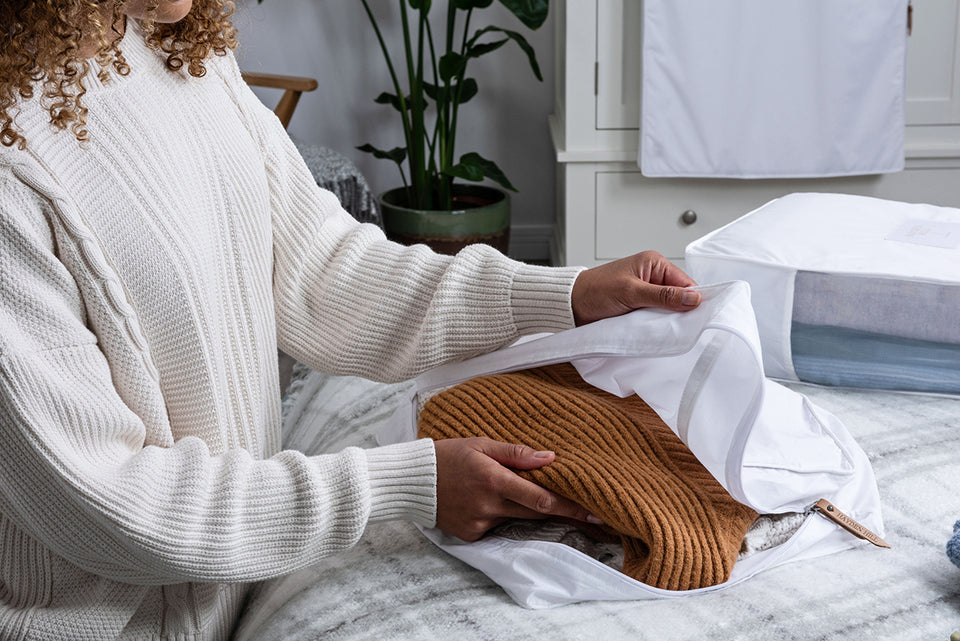
Hayden Hill storage bags are made of 100% organic cotton that is environmentally friendly and allows your favourite pieces to breathe. We deliver sustainable and beautiful garment care to preserve and protect the clothes you love most.

